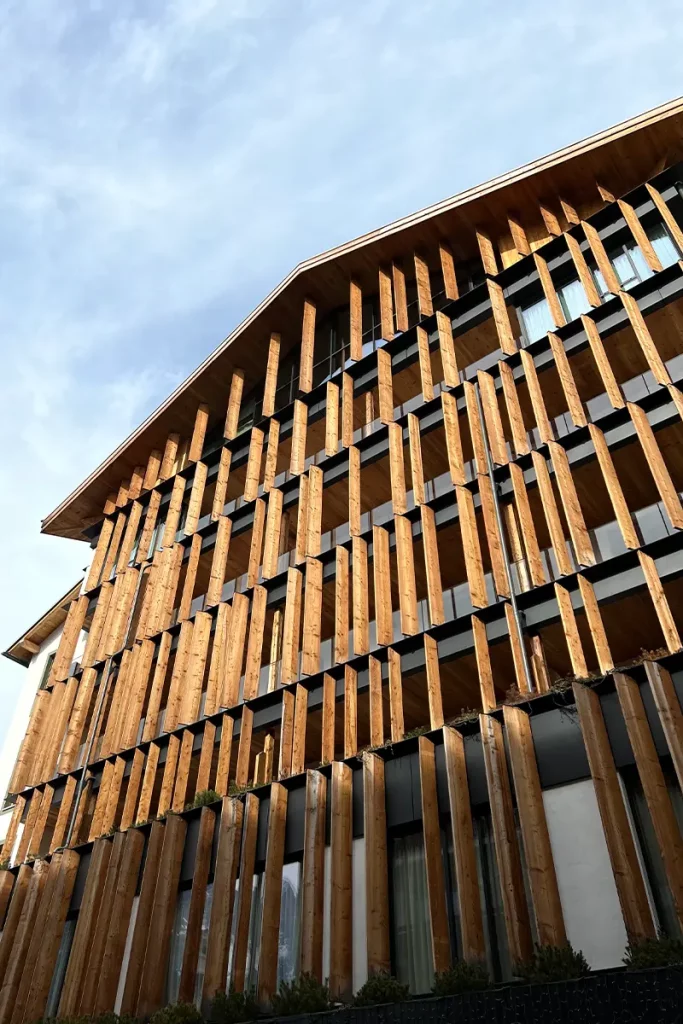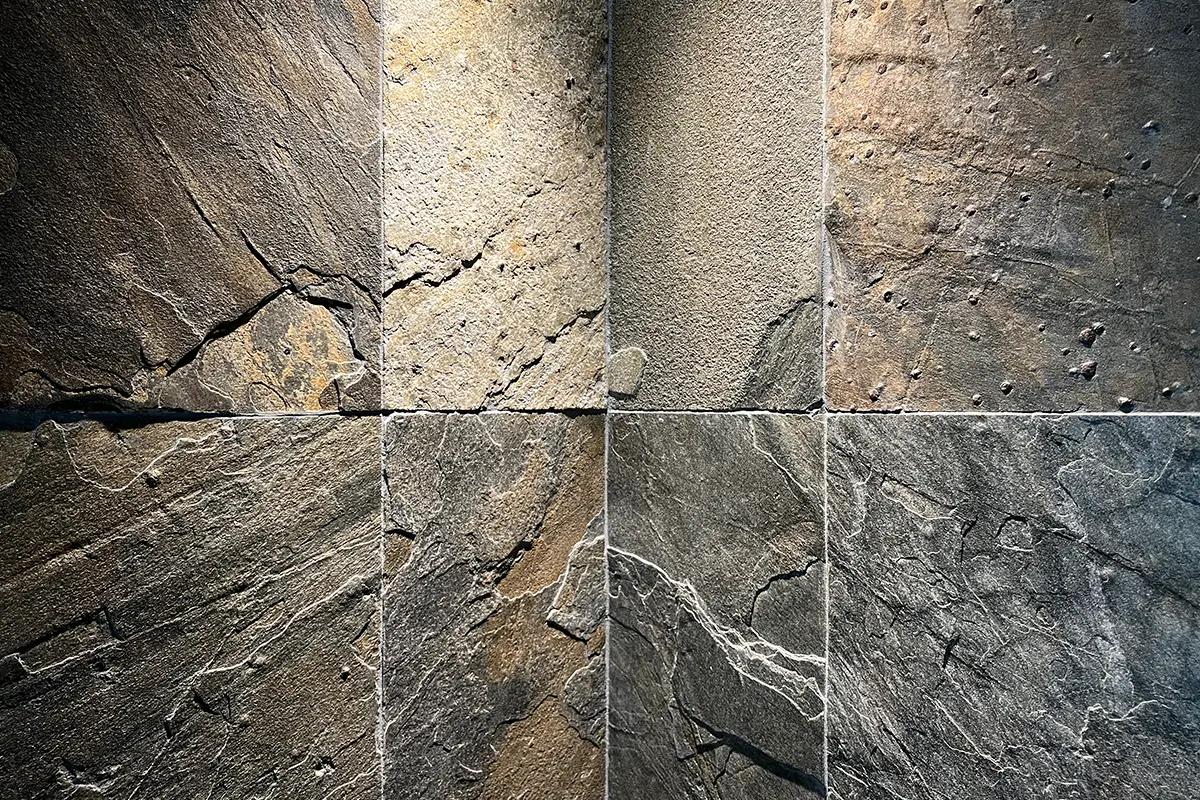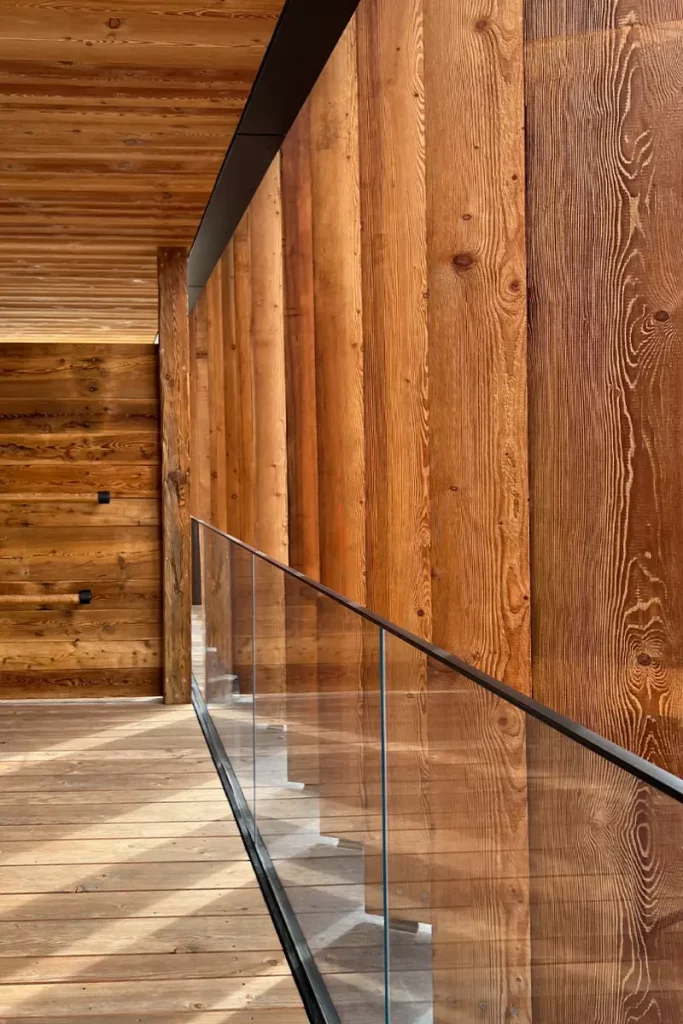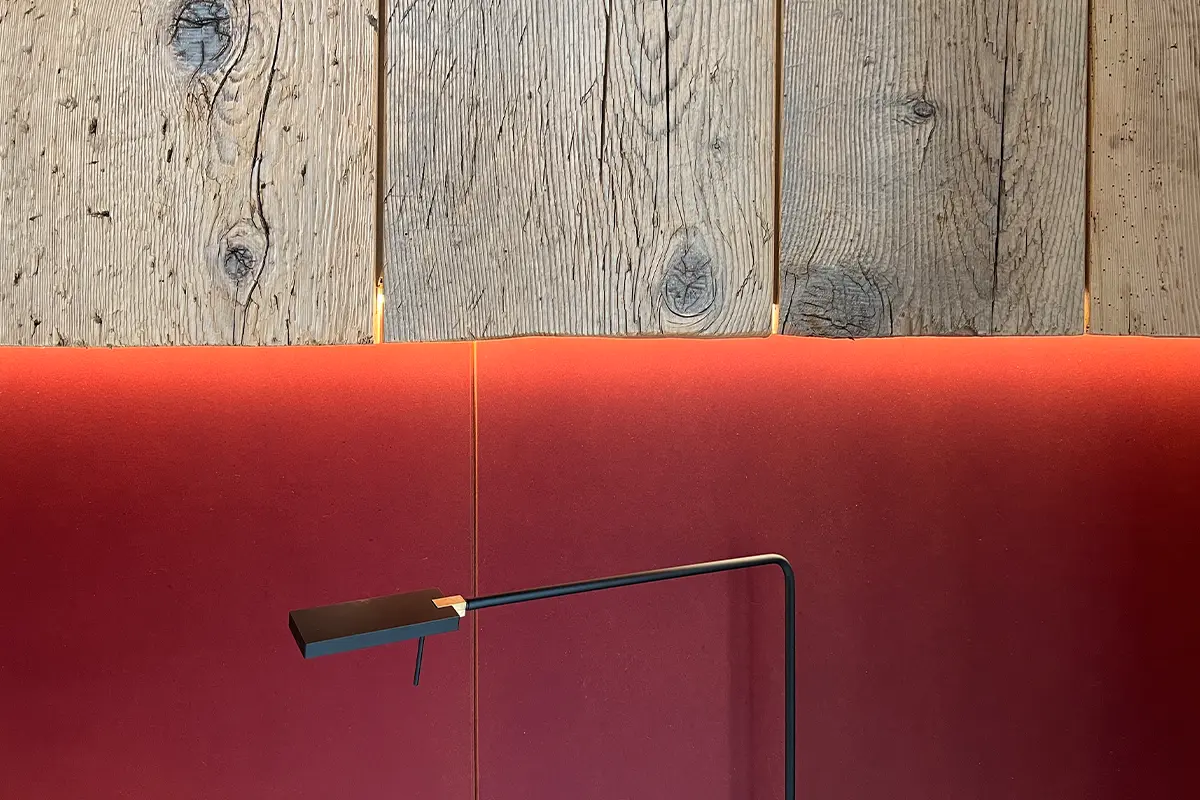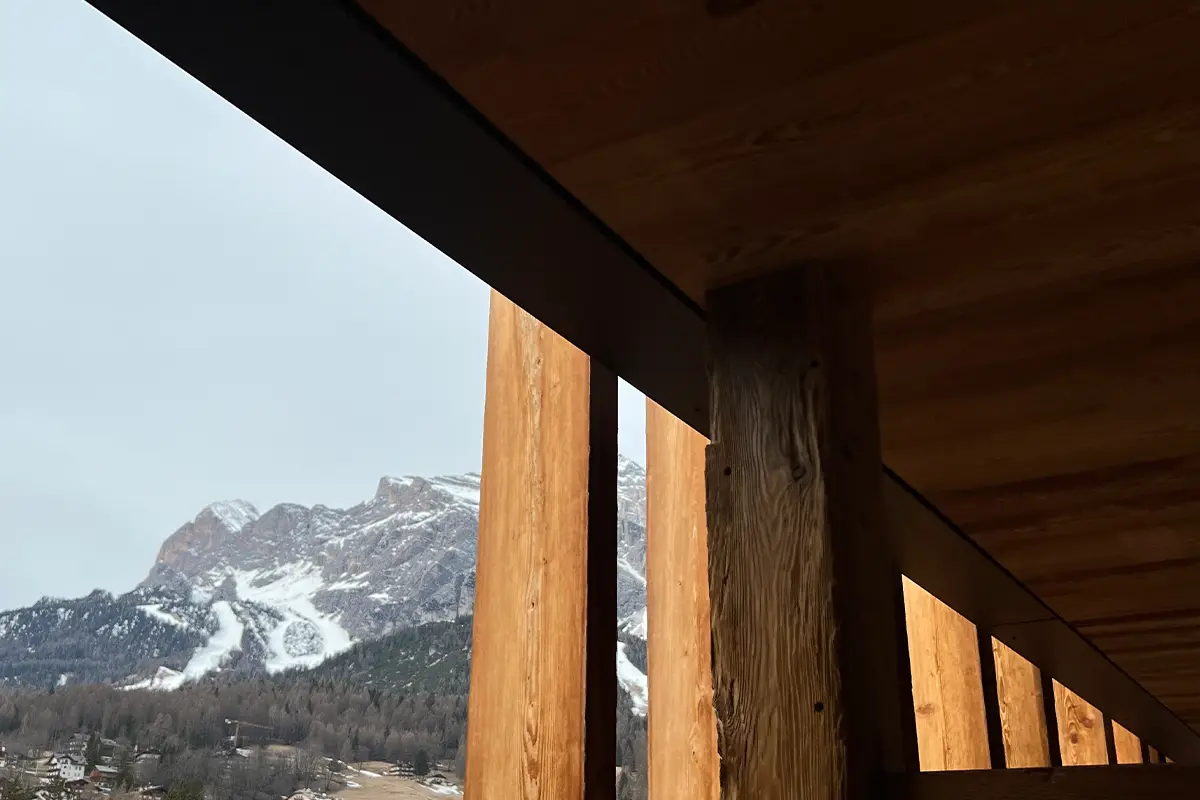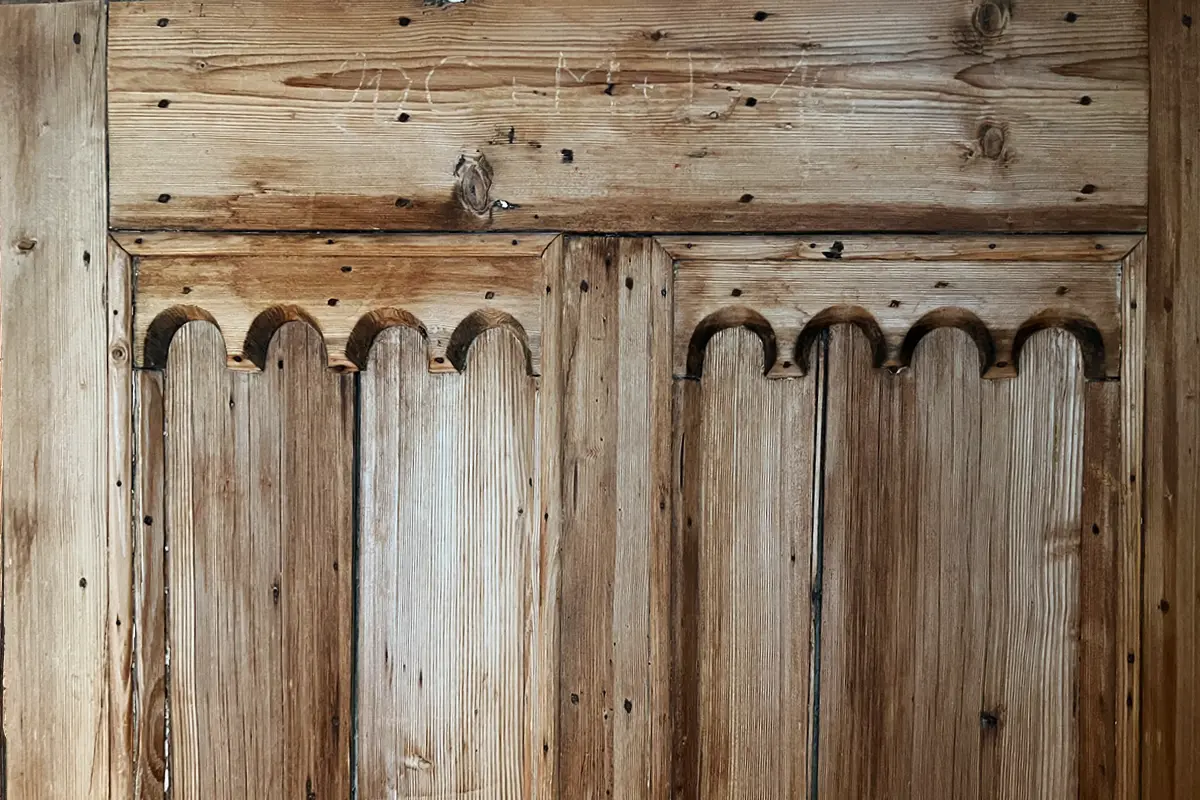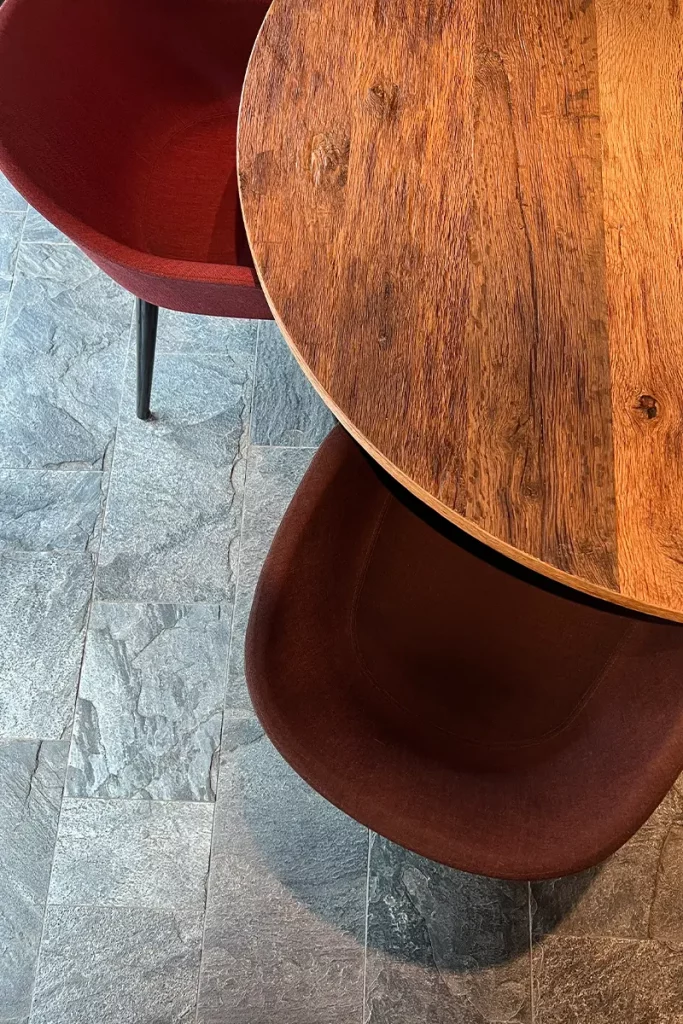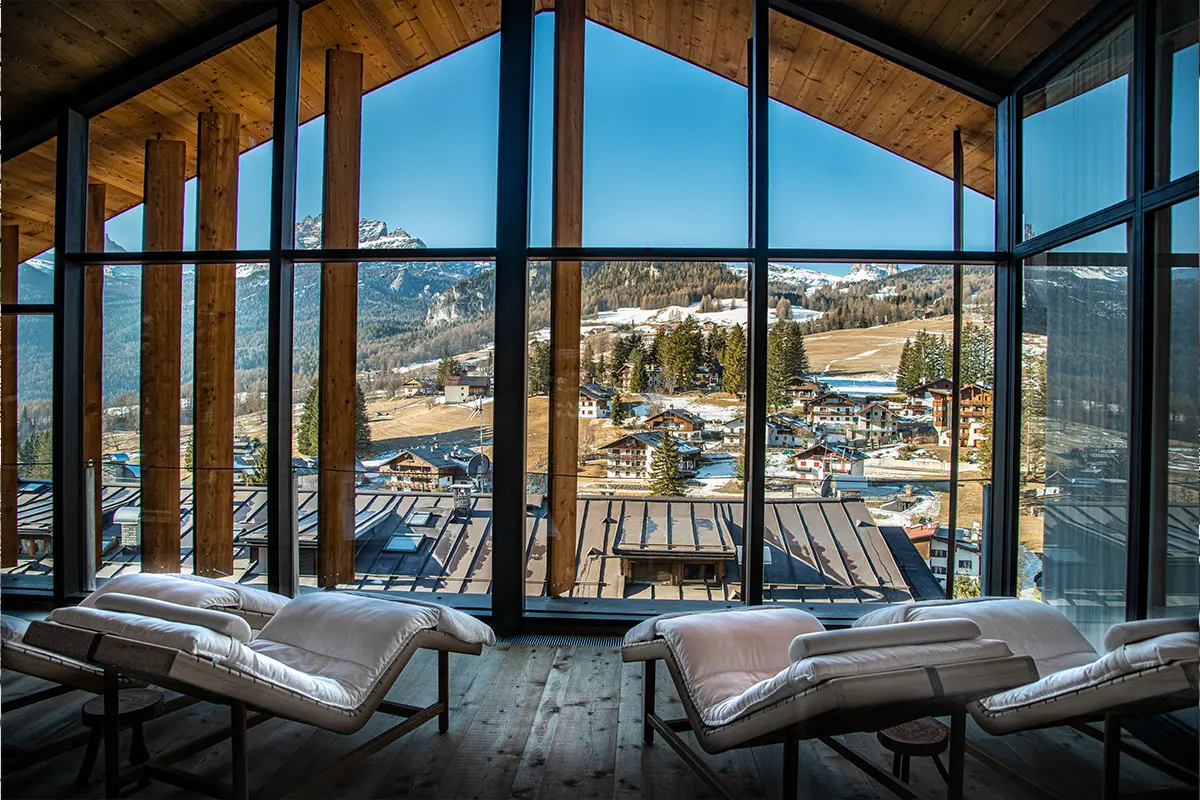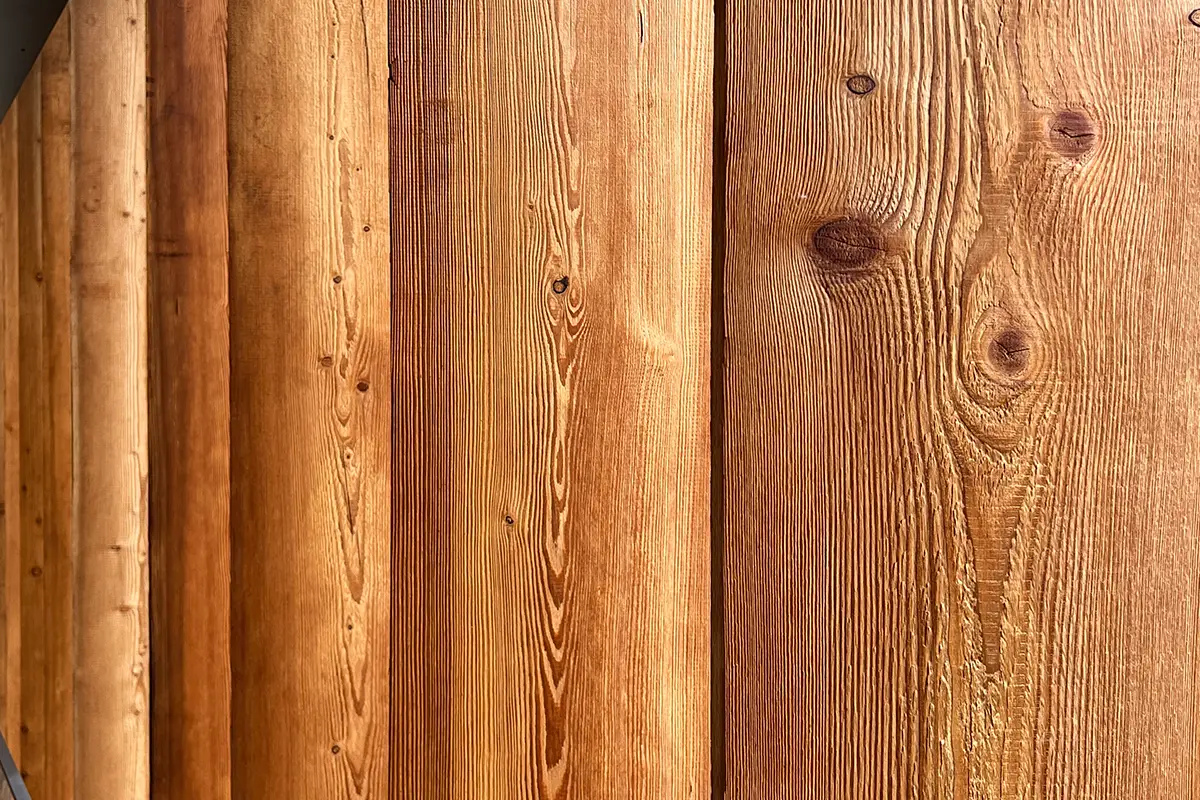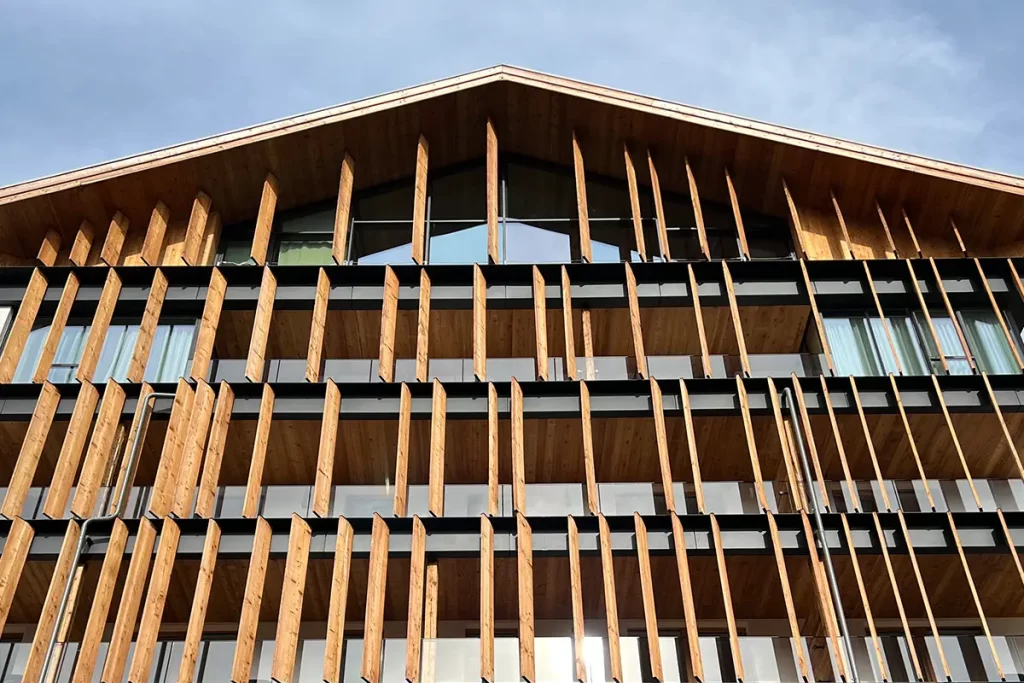Beyond the aesthetic value is the benefit to the environment and the human psyche: a hotel made of wood in the Dolomites has become a case study – a first in Europe
Cortina d’Ampezzo – Hotel de Len
Wood can speak at the Hotel de Len in Cortina. The conversation begins before you enter the building. Raising your eyes to the wooden boards that completely cover the façade. Arranged vertically in a series, they all face the mountain, inviting you to watch the spectacle of nature. Although we are in the center of Cortina d’Ampezzo, there are open views of the mountains – both on the ground floor and the intermediate floors, up to the full view of the sixth floor, where the panoramic Spa is located. Tofana di Rozes on one side, Monte Cristallo on the other. And then Sorapiss, Cinque Torri, Pomagagnon. We are in the pearl of the Dolomites, in a wooden alcove. De Len, in local Italian, means ‘made of wood’.
Hotel De Len opened its doors in 2022 after three years of renovation
The dialogue with wood continues inside the hotel. This material envelops and warms. It keeps you muffled. It suggests you relax and keep your worries out the door. It tells many stories, through the marks it bears on its surface. Hotel De Len opened its doors at the start of 2022, after a major renovation of the historic Hotel Impero, located right in the heart of the Pearl of the Dolomites. The architectural project signed by the Gris+Dainese studio of Venice proposes a new structure, interwoven with the surrounding environment. Wood predominates. It is recycled material, which brings distinctive elements to the surface
Marks on wood: what do they mean?
It is a tradition in north-eastern Italy to engrave wood, with different meanings. For example, on work tools, timber and roof beams, signs were engraved or branded to distinguish families – the ‘house sign’. Or, on the wooden door, a blessing was engraved: at the beginning the crosses representing Christ, at the end the number of the current year and in the center the letters C-M-B: the initials of the traditional names of the Magi: Gaspar, Melchior and Balthasar. These letters also correspond to the acronym of the Latin blessing ‘Christus Mansionem Benedicat’, which means: ‘May Christ bless this house’.
Hotel de Len – a conversation with Hotel Manager Carla Medri
«The Cortina area has its own rules», de Len’s Hotel Manager Carla Medri starts recounting. «On the wood, each family stamps ‘the marks of home’. They were made with a small iron: this iron is also the graphic symbol of this hotel. The marks are used to allocate a quantity of wood to each family, every year’». In Cortina d’Ampezzo, the heads of families descending from the ancient local lineage administer the community property according to common laws. In fact, the collective ownership and use of forest and pasture resources represented for many centuries the essential source of means of survival for the population: this system regulated the relationship between man and the environment, and allowed for a sustainable use of the natural territory of the valley. The Italian government through specific laws still protects this particular reality – today, the institute in Cortina manages around 16,000 hectares of forest, with timber cutting and sale and naturalistic forestry.
It is true, here the wood can speak. «In one room, you can still see some signs of horses’ hooves. The wood is mainly reused and recovered from the territory, involving local communities and workers: Cortina’s craftsmen, blacksmiths and carpenters have worked on a common project, sharing their knowledge. The wood is first cleaned, then it is given an anti-wormwood treatment, then it is treated with natural resin so that it is sanded».
Timber construction: energy saving and mental wellbeing
The use of wood, as well as being symbolic and representative of the territory, entails lower emissions of carbon dioxide and electricity, as well as ideal protection from acoustic, atmospheric and electromagnetic pollution. «Wood retains a lot of heat. It is also used as a floor covering: because we have underfloor heating, the energy expenditure is minimal. In summer we have a cooling system, so instead of hot water passing through the floor pipes, cool water passes through. We use pellets for heating instead of methane, which we only use for the gas cookers in the kitchen».
Hotel de Len offers 22 rooms of different categories, located from the first to the fifth floor
Clean lines, minimalism, colors and naturalness define a contemporary design of the common areas and the 22 rooms of Hotel de Len. The main material is antique wood: Swiss stone pine, known to improve the quality of sleep and with antibacterial properties, and antique fir first patina which, in addition to its balsamic scent, has properties that contribute to improving psychophysical balance. Or fir first patina: with its ancient scent and ability to rebalance the psychophysical state, and pine, known for improving sleep quality and antibacterial properties.
Hotel de Len – Gris+Dainese – University of Primorska
Hotel de Len is the subject of research conducted by Gris+Dainese together with the University of Primorska, Slovenia, as part of the InnoRenew CoE (The Renewable Materials and Healthy Environments Research and Innovation Centre of Excellence) research programme. For the first time in Europe, the object of study is a hotel structure: the experimentation was mainly focused on the use of wood – new and old – as an element of wellbeing, before being a surface and furnishing element, on natural and artificial light, and on ergonomics.
The relationship between space, colors, light, materials, ergonomics and the psyche is investigated through suggestions derived from the space around us and through neuropsychological insights. The research offers a tool to achieve maximum comfort from architecture and to meet the needs of increasingly health-conscious people, for whom the concept of well being understood as mere physical activity is no longer sufficient.
The Hotel de Len is a Sols – Swiss Optimal Living Society certified environment
The well-being of mind and body is linked to the interweaving of natural elements and modern technology: The Hotel de Len is a Sols – Swiss Optimal Living Society certified environment. Each bedroom has been treated and designed to create an optimal and entirely biocompatible sleeping experience. The natural regenerative quality of the materials and a reduction in harmful environmental factors characterize the guest experience in all rooms, but particularly in the bedrooms. In the latter, technologies such as Magma13, Orpheus and Astreo ensure high sleep quality and create harmonious energy environments for maximum comfort and well-being.
Magma13 technology for the bed
The Magma13 bed system is a patented sleep technology that claims to improve the quality of sleep by increasing the flow of energy in the body. It is marketed as a natural and drug-free solution to help people fall asleep faster, sleep more soundly, and wake up feeling more refreshed. The Magma13 bed system is made up of a series of embedded magnets that are strategically placed throughout the mattress. These magnets are said to create a magnetic field that helps to improve blood circulation, reduce inflammation, and increase oxygenation throughout the body. The system is also designed to provide targeted support for the body’s pressure points, which can help to reduce pain and discomfort while sleeping. It is available in a variety of sizes and is compatible with most bed frames. It’s relevant to note that the effectiveness of the Magma13 bed system has not been scientifically proven and individual results may vary. As with any sleep product, it’s always a good idea to consult with a healthcare professional before trying a new sleep aid.
Orpheus and Astreo systems
Orpheus and Astreo – The former is a mains filter in electromagnetic environments and is used to improve the sound and video quality of electronic equipment and reduce interference. Orpheus is capable of capturing and shielding radiation (external and internal electromagnetic fields) from devices (PCs, tablets, phones, etc.) connected to it. Astreo is a specific tool for reducing high-frequency electro-toxicological disturbances, known as ‘Dirty Electricity’, which propagate within the power grid and in the surrounding space.
Hotel de Len has a floor entirely dedicated to conviviality and relaxation – the flames of the modern fireplace warm the room, where one can entertain oneself for drinks, reading a book, conversation. On the -1 floor is a bar.
The Spa at Hotel de Len
If the mountains are visible from every room, it is on the sixth floor that true communion with nature takes place. Large windows allow you to enjoy natural light and a view of the valley and the mountains, while you walk along a path through waters of different temperatures: from the steam baths to the ice fountain, from the experience showers to the salt sauna and the Finnish sauna with a view of the Faloria and the Cortina bell tower. In the outdoor whirlpool, you can breathe in the fresh mountain air.
Andrea Ribaldone, executive chef corporate Egnazia Ospitalità Italiana
Andrea Ribaldone is the corporate executive chef of Aldo Melpignano’s hotel group Egnazia Ospitalità Italiana, of which Hotel de Len is part. «I take care of the format and catering, together with Nicola Loiacono of the part related to the chef’s search, to instill the people who are then operational in each structure and to make sure that the menus work and are appropriate. We pursue the philosophy that Aldo Melpignano has instilled since the opening of Borgo Egnazia: ‘can’t be anywhere else’. Our guests must feel a real energy, and immerse themselves in the truth of the place. They must be able to experience the connection with the land – and they will not forget this experience».
Local food at Hotel de Len, Cortina d’Ampezzo
«We offer Ampezzo cheese, local vegetables, game, and fish (both from the Venetian lagoon and from the river and lake). The fried filet of fallow deer we propose is the equivalent of the fritto misto you would eat at the sea – we played on the concept, and on the structure of the dish. Fallow deer is a typical local game, along with fallow deer, venison, even wild boar. We collaborate with local producers, to establish as much of a local supply chain as possible. For example, with the Caseificio Quattro Portoni, which produces buffalo milk products in Bergamo. We work with the guys from El Brite de Larieto, who breed the beasts (and they themselves do catering)». The menu is not divided into starters, main courses, desserts, but by thematic areas: «for spring and summer, we propose, for example, raw vegetables, or a declination of cod, and a declination of pork. In winter, a large part was dedicated to fondues».
Chefs Andrea Ribaldone and Leonardo d’Ingeo – Hotel de Len and Cà-Ri-Co
Hotel de Len hosted Milan’s first cocktail bistro Cà-Ri-Co for an evening. Chefs Andrea Ribaldone and Leonardo d’Ingeo (at the helm of Cà-Ri-Co) offered guests a four-hand menu. Each chef has signed two of the four dishes on the menu: the result will be a true blend of tradition and experimentation, of territorial cuisine and international influences. To accompany the courses, a paring of cocktails designed for the occasion by the Hotel de Len’s bartenders – Special Sponsor was Martini.
Egnazia Ospitalità Italiana
Egnazia Ospitalità Italiana is the new group born from the experience of Apulian hotel entrepreneur Aldo Melpignano, whose adventure began in 1996 with the opening of the masseria San Domenico, also known for the luxury resort Borgo Egnazia. The new reality already includes a number of properties owned by the Melpignano family, including the masseria Le Carrube in Ostuni, the Santavenere in Maratea, the Hotel de Len in Cortina d’Ampezzo, as well as two other openings planned for 2024: Castel Badia in Brunico and a structure on the outskirts of Rome. The aim is to arrive in 2027 with a portfolio of twenty hotels. The new group joins the Melpignano family’s historic company, San Domenico Hotels, which includes, among others, Borgo Egnazia, in addition to the masseria of the same name.
Matteo Mammoli
